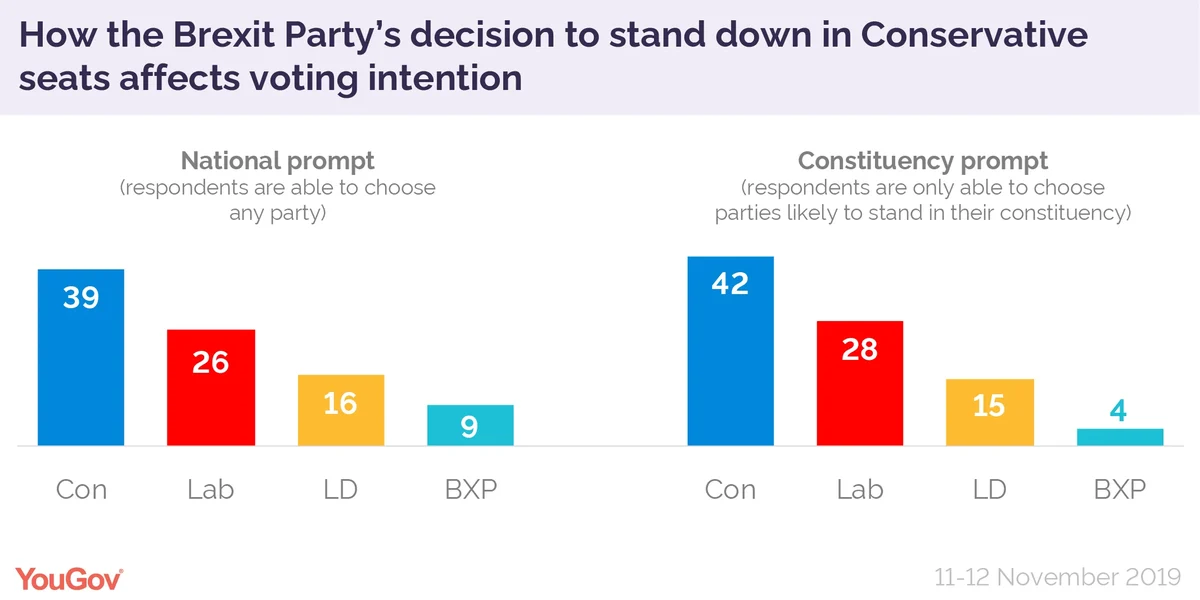As we learn more about which constituencies parties will target in the general election, we can adapt our polling to improve accuracy
Earlier this week Nigel Farage announced that the Brexit Party will not field candidates in Conservative-held seats, despite having previously suggested that it would have over 600 candidates standing.
Obviously that poses a challenge when asking people about their voting intentions at the general election: people can only vote for parties which put up a candidate in their seat. To solve this we asked about the election in two different ways in our latest voting intention survey.
First, we posed our traditional question, where we show people a list of all the parties and ask how they would vote in an election tomorrow. Secondly, we showed people a list of the parties and candidates who are likely to stand in their own seat, and asked which of them they would vote for. The candidates shown reflected both the seats where the Brexit Party would not stand, and the seats where the Liberal Democrats, Greens and Plaid Cymru have said they will not stand. The two different results are shown below:
As you would expect, taking away the Brexit Party in almost half the seats halves their support, from 9% to just 4%. The vast majority of this support seems to transfer directly to the Conservative Party.
However, Labour also does slightly better when we prompt using candidate names for their seat, perhaps reflecting some degree of tactical voting, perhaps the personal vote of incumbent Labour MPs.
The end result is that the Conservatives continue to enjoy a lead in the low teens, with four weeks to go until election day. Given the impact that candidates standing down in seats has on the total level of party support, we'll be continuing to use the candidate prompt in the run up to the election.
Photo: Getty









